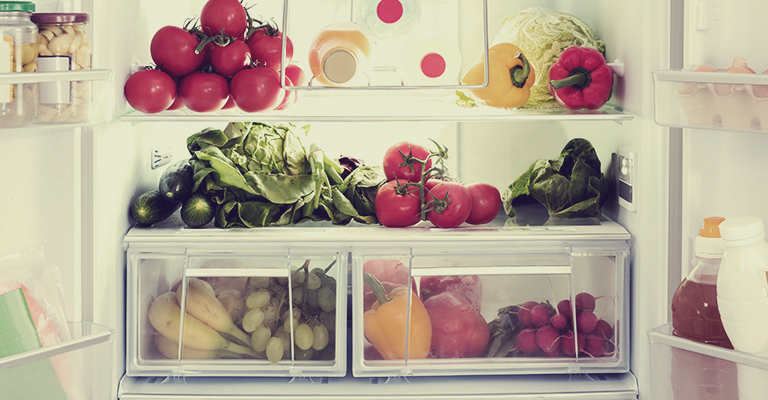How to Keep Fruits and Vegetables in the Fridge Longer

No one likes to throw away foods that have stayed in the fridge for too long. Yet, 2.2 million tons are wasted each year in Canada. On the occasion of the Clean Out Your Refrigerator Day, we want to share a few tips that will help you keep your fruits and vegetables in the fridge longer and avoid wasting food as much as possible.
- Organize your fridge when you return from the grocery store: take out the fruits and vegetables that are already in the fridge and place the new ones at the back (or at the bottom). This way, you will think of using the oldest foods first. You could also give the shelves and drawers a quick clean using a damp cloth.
- Store your fruits and vegetables in a drawer or on the lower shelf, as that's where the temperature is best for preservation. Otherwise, they might freeze.
- Place paper towels in your drawers to absorb condensation. Humidity can cause fruits and vegetables to rot faster.
- Do not store fruits along with vegetables. Some fruits such as apples and pears produce ethylene while ripening, and this would cause your vegetables to age prematurely.
- Wash your fruits and vegetables only before eating them. Only whole leafy vegetables such as lettuce, Swiss chard and kale must be washed before they're stored in the fridge.
There are also tips that apply to certain fruits and vegetables specifically. For instance:
- Wrap celery in aluminum paper. Unlike plastic packaging, aluminum paper lets the gas celery produces escape. This prevents the vegetable from rotting.
- Keep mushrooms in a paper bag. They will stay dry and keep longer.
- Place herbs in a pot with a little water, as you would do with flowers, and use them as needed.
Finally, don't forget that less attractive or overripe fruits and vegetables can still be useful. Among others, they can be used to make soups, purées and smoothies. No one will know! It is also wise to clearly evaluate your needs before buying fruits and vegetables and to know exactly what you're going to do with them.
